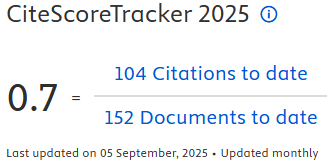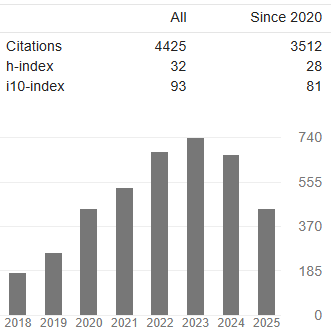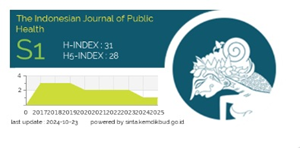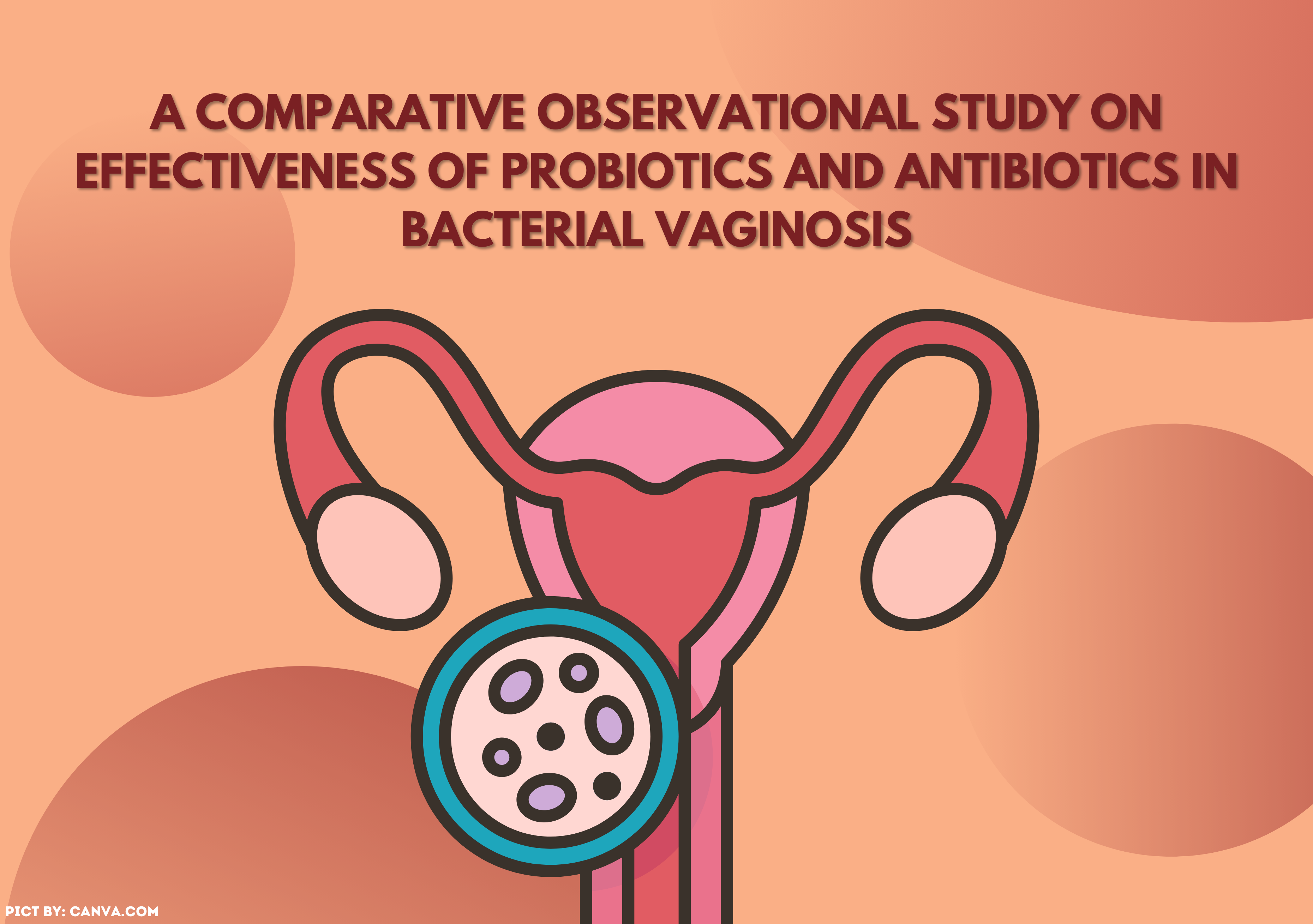THE ROLE OF MENTAL WORKLOAD IN INVESTING QUALITY OF LIFE AMONG WORKERS IN THE PHOSPHORIC ACID INDUSTRY

Introduction: Every workplace has potential hazards, one of which is psychological hazards, namely work stress. The stress felt by workers can interfere with their work activities if not controlled immediately. In Indonesia, 11.6–17.3% of the 150 million adult population suffers from stress at work. Moreover, job stress can be caused by various factors. Aims: To assess workers' quality of work life by analyzing the relationship between mental workload and work stress. Moreover, this research investigates the individual characteristics, mental workload level, and stress level between workers. Methods: This research is a quantitative study using an observational design and a cross-sectional technique. The participants in this study were all 35 maintenance personnel. Mental workload and work stress are assessed using NASA-TLX and DASS-21 questionnaire, respectively. Results: The collected data are statistically analyzed using the Spearman correlation test and the Cramer contingency coefficient correlation test. The results showed that mental workload has a strong relationship with work stress which is in the strong category (r= 0,679) and the direction of the relationship is unidirectional. Conclusion: The conclusion of this study is that the higher the mental workload possessed by workers, the higher the level of perceived work stress. Therefore, the company can reduce work stress by conducting both individual and organizational strategies
American Psychological Association, 2019. Stress in America: Stress and Current Events. [online] America.
Amir, J., Wahyuni, I. and Ekawati, 2019. Hubungan Kebisingan, Kelelahan Kerja Dan Beban Kerja Mental Terhadap Stres Kerja Pada Pekerja Bagian Body Rangka PT.X. Jurnal Kesehatan Masyarakat (e-Journal), [online] 7(1). https://doi.org/ISSN: 2356-3346
Basyit, A., Sutikno, B. and Dwiharto, J., 2020. Pengaruh Tingkat Pendidikan Dan Pengalaman Kerja Terhadap Kinerja Karyawan. Jurnal EMA, 5(1), pp.60–67. https://doi.org/10.47335/ema.v5i1.44
Dewi, D.R.M., 2017. Hubungan Tingkat Religiusitas dan Status Psikologis dengan Obesitas Sentral Pada Mahasiswa Pendidikan Dokter Universitas Muhammadiyah Yogyakarta. Universitas Muhammadiyah Yogyakarta.
Fahamsyah, D., 2017. Analisis Hubungan Beban Kerja Mental Dengan Stres Kerja Di Instalasi Cssd Rumah Sakit Umum Haji Surabaya. The Indonesian Journal of Occupational Safety and Health, 6(1), p.107. https://doi.org/10.20473/ijosh.v6i1.2017.107-115
Febriandini, E.A., Ma'arufi, I. and Hartanti, R.I., 2016. Analisis Faktor Individu , Faktor Organisasi dan Kelelahan Kerja Terhadap Stres Kerja Pada Perawat ( Studi di Ruang Rawat Inap Inpatient Unit 3rd Grade at General Hospitals Dr . H Koesnadi, Bondowoso District ). e-Jurnal Pustaka Kesehatan, [online] 4(1), pp.175–180. https://doi.org/ISSN: 2721-3218
Hasan, A., Wahyuni, I. and Kurniawan, B., 2018. Hubungan Antara Beban Kerja Mental Dan Shift Kerja Terhadap Stres Kerja Pada Pekerja Central Control Room (Studi Kasus Pada PT. PJB Unit Pembangkit Paiton). Jurnal Kesehatan Masyarakat (e-Journal), [online] 6, pp.1–6. https://doi.org/ISSN: 2356-3346
Hassard, J., Teoh, K., Cox, T., Dewe, P., Cosmar, M., Gründler, R., Flemming, D., Cosemans, B. and Van den Broek, K., 2014. Calculating the Cost of Work-Related Stress and Psychosocial Risks: European Risk Observity: Literature Review. [online] European Agency for Safety and Health at Work. Luxembourg: European Agency for Safety and Health at Work (EU-OSHA). https://doi.org/10.2802/20493
Ivancevich, J.M., Konopaske, R. and Matterson, M.T., 2007. Perilaku dan Manajemen Organisasi. 7th ed. [online] Erlangga.
Jaafar, S., Hamid, M.Z and Hamid M.F.A., 2017. Relationship between workload and stress. Politeknik Tuanku Sultanah Bahiyah, (2015).
Kamal, K., 2019. Penerapan Sistem Kesehatan di Industri Hulu Migas. Jakarta: Badan Penerbit Fakultas Kedokteran Universitas Indonesia.
Kousha, M., Bagheri, H.A. and Heydarzadeh, A., 2018. Emotional intelligence and anxiety , stress , and depression in Iranian resident physicians. Journal of Family Medicine and Primary Care, 7(2), pp.420–424. https://doi.org/10.4103/jfmpc.jfmpc_154_17
Labour Force Survey, 2019a. Work-related stress, anxiety, depression statistic in Great Britanian 2019. [online] Britain.
Labour Force Survey, 2019b. Work-related stress, anxiety, depression statistic in Great Britanian 2019. [online] Britain.
Longo, L. and Leva, M.C., 2017. Human Mental Workload. [online] E-book. https://doi.org/10.1007/978-3-319-61061-0
Made, N. and Wulanyani, S., 2015. Tantangan dalam Mengungkap Beban Kerja Mental. Buletin Psikologi, 21(2), p.80. https://doi.org/10.22146/bpsi.7372
Munandar, A.S., 2008. Psikologi Industri dan Organisasi. Depok: Universitas Indonesia Press.
National Safety Council, 2003. Manajemen Stres. [online] EGC. https://doi.org/979-448-624-8
Panigrahi, A., 2018. Managing stress at workplace. Journal of Management Research and Analysis, 3(4), pp.154–160. https://doi.org/10.18231/2394-2770.2016.0001
Rezvani, A. and Khosravi, P., 2019. Emotional intelligence: The key to mitigating stress and fostering trust among software developers working on information system projects. International Journal of Information Management, [online] 48(January), pp.139–150. https://doi.org/10.1016/j.ijinfomgt.2019.02.007
Robbins, S.P. and Judge, T.A., 2017. Perilaku Organisasi. 16th ed. Jakarta: Salemba Empat.
Sauter, S., Murphy, L., Colligan, M., Swanson, N., Joseph Hurrell, Jr., Frederick Scharf, Jr., Sinclair, R., Grubb, P., Goldenhar, L., Alterman, T., Johnston, J., Hamilton, A. and Tisdale, J., 1998a. Stress At Work. [online] Columbia: National Institute for Occupational Safety and Health. https://doi.org/10.1037/e371692004-001
Sauter, S., Murphy, L., Colligan, M., Swanson, N., Joseph Hurrell, Jr., Frederick Scharf, Jr., Sinclair, R., Grubb, P., Goldenhar, L., Alterman, T., Johnston, J., Hamilton, A. and Tisdale, J., 1998b. Stress At Work. [online] Columbia: National Institute for Occupational Safety and Health. https://doi.org/10.1037/e371692004-001
Suci, I.S.M., 2017. Hubungan Beban Kerja Mental Dan Tingkat Monotonitas Dengan Stres Kerja Pada Pekerja Packer Dan Loader PT. Semen Indonesia (Persero) TBK. Tuban. [online] Universitas Airlangga.
Suci, I.S.M., 2018. Analisis Hubungan Faktor Individu Dan Beban Kerja Mental Dengan Stres Kerja. The Indonesian Journal of Occupational Safety and Health, 7(2), p.220. https://doi.org/10.20473/ijosh.v7i2.2018.220-229
Sugiharto, F.M., 2019. The Relationship between Mental Workload and Occupational Stress among Aircraft Maintenance Officers at PT X. The Indonesian Journal of Occupational Safety and Health, 8(2), p.233. https://doi.org/10.20473/ijosh.v8i2.2019.233-239
Sugiyono, 2017. Metode Penelitian Kuantitatif, Kualitatif, dan R&D. Bandung: Alfabeta.
Supriyatna, Y., 2020. Tingkat Pendidikan dan Masa Kerka terhadap Kinerja Karyawan PT Prima Makmur Rotokemindo. Jurnal Manajemen, 10(1). https://doi.org/10.30656/jm.v10i1.1885
Ukkas, I., 2017. Faktor-Faktor Yang Mempengaruhi Produktivitas Tenaga Kerja Industri Kecil Kota Palopo. Kelola: Journal of Islamic Education Management, 2(2). https://doi.org/10.24256/kelola.v2i2.440
Yurista, D., Bakar, A. and Kunci, K., 2017. Hubungan Antara Kecerdasan Emosi Dengan Stres Kerja Pada Perawat. Jurnal Psikogenesis, 5(1), pp.1–13. https://doi.org/10.24854/jps.v5i1.495
Copyright (c) 2024 The Indonesian Journal of Public Health

This work is licensed under a Creative Commons Attribution-NonCommercial-ShareAlike 4.0 International License.
- The authors agree to transfer the transfer copyright of the article to The Indonesian Journal of Public Health effective if and when the paper is accepted for publication.
- Authors and other parties are bound to the Creative Commons Attribution-NonCommercial-ShareAlike 4.0 International License for the published articles, legal formal aspect of journal publication accessibility refers to Creative Commons Attribution-NonCommercial-ShareAlike 4.0 International License (CC BY-NC-SA), implies that:
- Attribution ” You must give appropriate credit, provide a link to the license, and indicate if changes were made. You may do so in any reasonable manner, but not in any way that suggests the licensor endorses you or your use.
- NonCommercial ” You may not use the material for commercial purposes.
- ShareAlike ” If you remix, transform, or build upon the material, you must distribute your contributions under the same license as the original.































